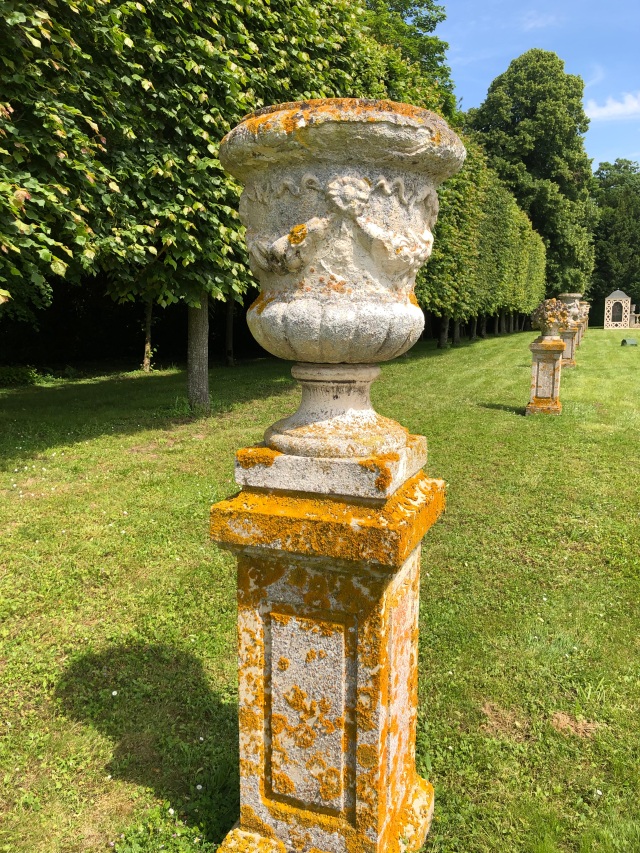 Last week I felt as if I had stepped back into the 18th century when I visited a garden where the basic original layout from the 1740s has been slowly restored over the past fifty years. Perhaps nothing unusual about that, but over the last 20 or 30 of those years the owners have also significantly enhanced the gardens with additional features which might have existed then.
Last week I felt as if I had stepped back into the 18th century when I visited a garden where the basic original layout from the 1740s has been slowly restored over the past fifty years. Perhaps nothing unusual about that, but over the last 20 or 30 of those years the owners have also significantly enhanced the gardens with additional features which might have existed then.
Now, in addition to the parterres, ponds, pots and a pyramid, visitors are treated to a grotto and watery jokes and surprises which try to recapture the sense of wonder and good humour of a particular kind of grand garden of nearly 300 years ago.
Read on to find out more…
 As usual the photos are mine unless otherwise acknowledged
As usual the photos are mine unless otherwise acknowledged
I was heading back to London from my garden in France and stopped over at the Chateau of Vendeuvre in Normandy. It’s a lovely example of a small scale country estate and was built in the 1740s as a replacement for an earlier manor-house by the Forestier family, the Comtes de Vendeuvres, and which is still lived in by their descendants. The gardens were laid out in typical French formal style at the same time with simple topiary evergreens, urns and lawns.
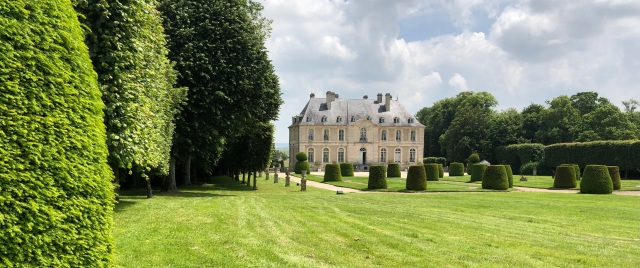
Luckily the chateau was not badly damaged during the French Revolution, but much of the grounds were transformed in an “English” style park in the 19thc, before being abandoned during the First Word War. The buildings suffered badly during the Second World War with the chateau itself used for barracks, the pretty classical orangery hit by a bomb and the gardens and parkland criss-crossed with trenches and used for tank manoeuvres. Although repairs to the buildings began in 1945 work on the grounds didn’t really get under way until 1970, when the then Comte, Guy de Vendeuvre, used a plan dating from 1813 as the starting point, although he simplified it considerably. However, he also took a decision to create a lot of new garden features based around the two themes of water and topiary, both inspired by the survivals of the 18thc design. More recently the more open areas of the parkland and gardens have become home to a tulip festival every spring .
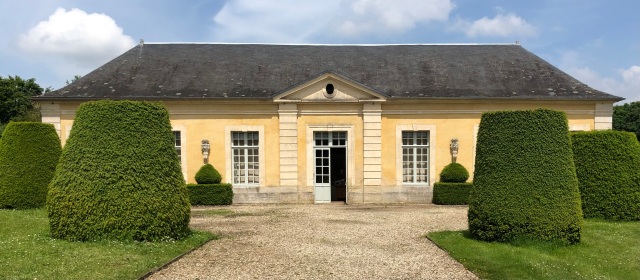
The orangery, restored in 1983 and now serving as as the ticket office and shop
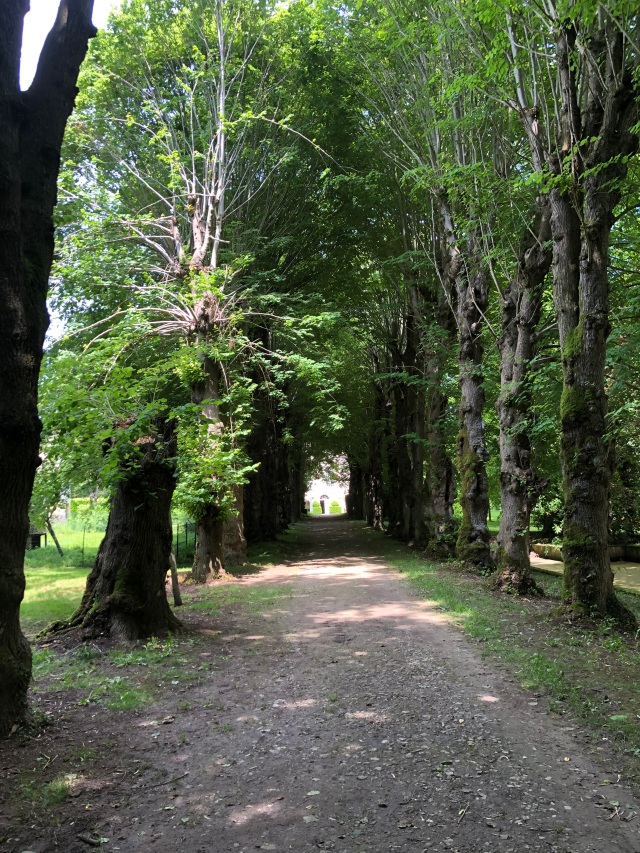 Some elements of the earlier gardens have survived, notably an avenue of lime trees running at right angles to the chateau. This originally ran through the kitchen gardens and other more utilitarian areas.
Some elements of the earlier gardens have survived, notably an avenue of lime trees running at right angles to the chateau. This originally ran through the kitchen gardens and other more utilitarian areas.

One side there is a large colombier or dovecot dating from 1811 which has 1400 nesting boxes and in the centre a central pool for the pigeons or doves who could drink and bathe. To provide the water for this the building they had an impluvium roof ie one which had a central opening with the roof sloping inwards allowing the collection of water. Unfortunately this is now unused and in a poor state with the roof collapsed. It was a replacement for one destroyed during the French Revolution since such pigeon or dove houses were a sure sign of wealth and status with the number of nesting boxes allowed strictly controlled and directly related to the amount of land owned. As a result they were a prime target for destruction, as they had been in England during the Civil War.
For more on colombiers see Silent Nests by Vicki Topaz (2009)
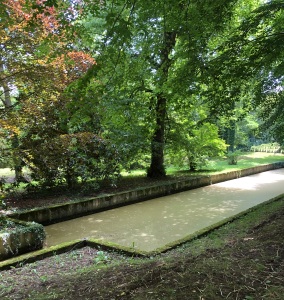
On the other side of the lime avenue to the dovecot is a vivier – or a pond designed to stock fish ready for eating.
One end was reserved for trout which were eaten on special occasions and, separated by netting, at the other end, were kept the more common freshwater fish for Fridays and other fasting days. The fish were fattened up with the sweepings of the local flour mill and, so I am told, by the greasy water created by washing the dishes!
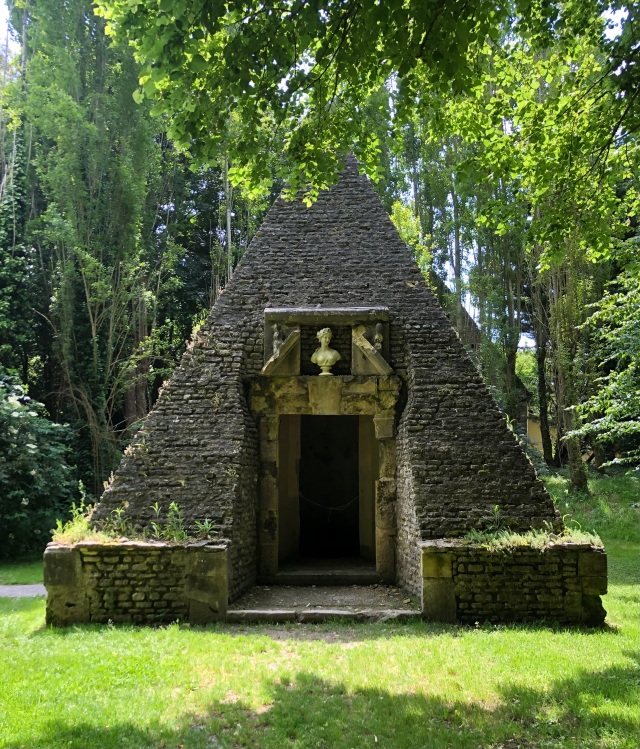
 At the far end of the lime avenue stands an impressive pyramid. It’s not a mausoleum or folly as might be imagined but an ice house.
At the far end of the lime avenue stands an impressive pyramid. It’s not a mausoleum or folly as might be imagined but an ice house.
Inside is a deep shaft where ice collected from the various water sources around the park was stored in the winter for use in the summer. It is surrounded by trees and access is via double doors facing north to help keep the temperature as low as possible. When the winters weren’t sufficiently cold ice was apparently bought into Caen by boat from Norway.
Its design may have inspired by Napoleon’s campaigns in Egypt, which led to the publication of a multi-volume Description of Egypt between 1809 and 1828. However, James Stevens Curl in The Egyptian Revival is clear that there were signs of an interest in Egyptian design in the later 18thc, so it maybe a few decades earlier. He identifies two others both near Paris: another pyramid ice-house at Desert de Retz dating from 1771 and one in the form of an Egyptian temple at Soisy-sur-Oise, dating from about 1800. To confuse matters further the bust over the doorway isn’t an Egyptian goddess or queen such as Nefertiti but Persephone!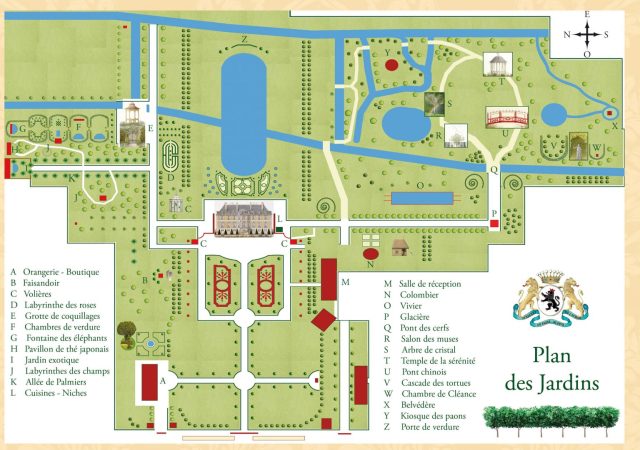
Moving from the lime avenue and pyramid the visitor enters the water gardens where the Count has allowed his imagination to run fairly wild. The river Dives runs rapidly past the end of the property, but as can be seen from the map splits into two main branches, one of which flows along one edge of the park and the other more slowly through an area known as “Les Isles” or “The islands”. The two streams are on different levels and feed some small cascades and smaller rivulets as well as the garden’s watery surprises. These have been chosen and designed not necessarily for historic authenticity but to show what water has been capable of, and to illustrate various water-related stories. I don’t have space to include them all but here are a few…

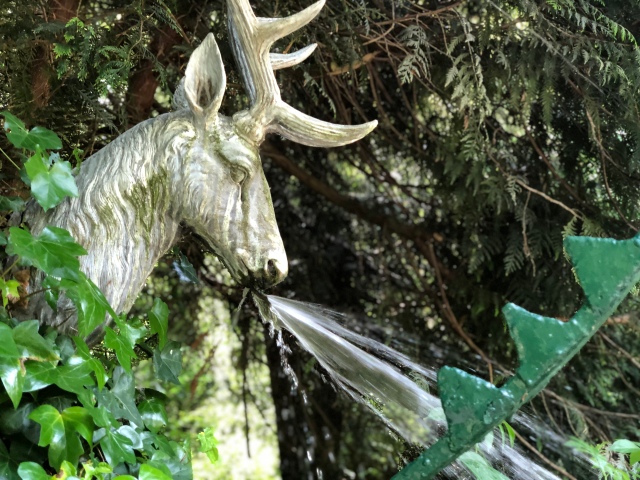 First is a bridge over one branch of the river. At the far end is an arch with stags head on either side. These spout water as the visitor crosses, luckily into the river rather than over the spectator. These days the flow is controlled by an infra-red beam, as it is the case with almost all the water jokes rather than a gardener lying in wait to surprise the unwary.
First is a bridge over one branch of the river. At the far end is an arch with stags head on either side. These spout water as the visitor crosses, luckily into the river rather than over the spectator. These days the flow is controlled by an infra-red beam, as it is the case with almost all the water jokes rather than a gardener lying in wait to surprise the unwary.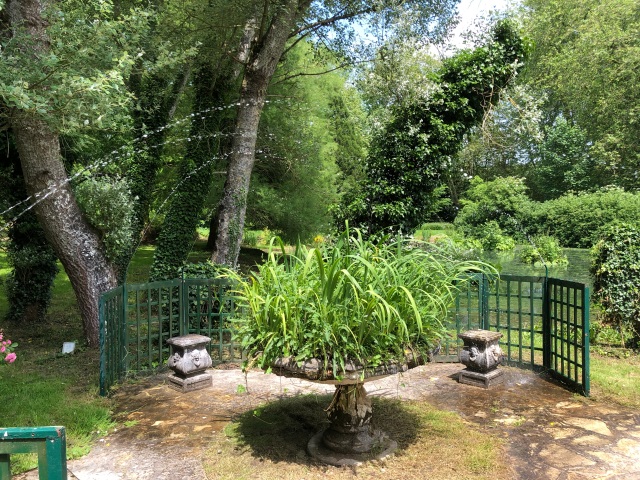
Next the path leads to The Fountain of the Muses which was apparently inspired by a story told by the Greek historian Hesiod, although I’ve been unable to trace the original. A young gardener not satisfied with his garden [havent we all been there!] seeks help from the Muses at the Hippocrene fountain, because it was said whoever drank the water there was sure to be inspired in their dreams. Once asleep, he dreamt of four people: a painter, a poet, a plantsman and someone with good taste. Each said that on their own they couldn’t create a great garden, but together they had made the most beautiful gardens in the world. When he woke up, the gardener prayed that the Muses would grant him those four gifts: poetry and art, knowledge, and good taste. Laughing, they instead gave him green fingers.
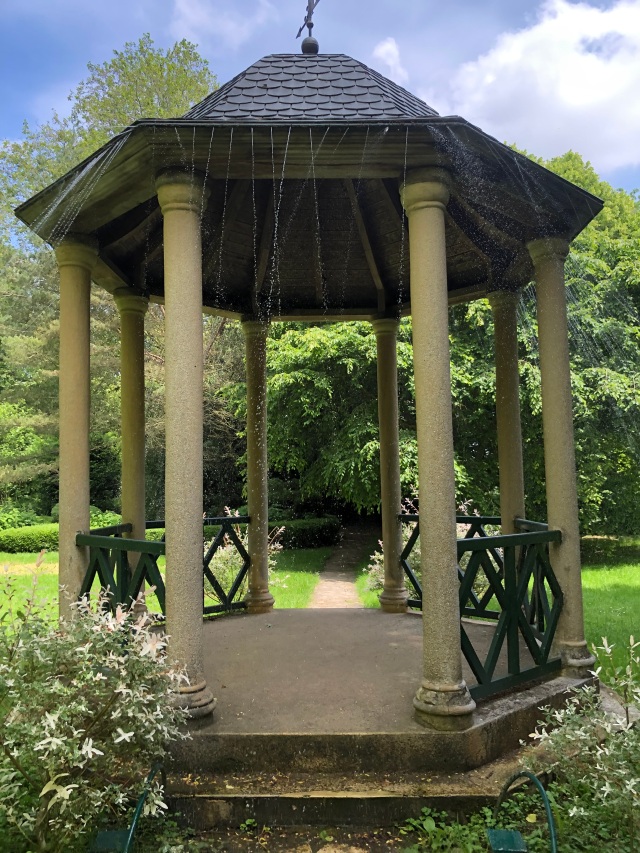 The Temple of Serenity is a small open structure with eight columns holding up its domed roof. At first it seems very “unwatery” but as you step in rain falls all around outside. Again, I can’t track down the story which inspired it but according to the guidebook it relates to the story of a powerful king in a rich country where the inhabitants were very happy. Despite this the King worried continuously about his kingdom so consulted a wise woman. She advises a visit to the ‘temple of the eight columns’. The king visited but nothing seemed to relieve his worries but as he went to leave the rain started and so he stayed. The sound of the rain and its calming influence helped calm his fears and eventually he decided he could cope and so stepped out through the rain where he found a letter formed in water in front of each column. Together they spelled out the word Serenity.
The Temple of Serenity is a small open structure with eight columns holding up its domed roof. At first it seems very “unwatery” but as you step in rain falls all around outside. Again, I can’t track down the story which inspired it but according to the guidebook it relates to the story of a powerful king in a rich country where the inhabitants were very happy. Despite this the King worried continuously about his kingdom so consulted a wise woman. She advises a visit to the ‘temple of the eight columns’. The king visited but nothing seemed to relieve his worries but as he went to leave the rain started and so he stayed. The sound of the rain and its calming influence helped calm his fears and eventually he decided he could cope and so stepped out through the rain where he found a letter formed in water in front of each column. Together they spelled out the word Serenity.

 The Chinese Bridge invokes a Chinese legend of Yin a vain girl who rather like Narcissus was really only in love with herself, and never tired of looking at her own reflection as she crossed the stream beneath. She was loved from afar by a bird-catcher, Han, who finally plucked up courage to declare himself, only to be rejected out of hand.
The Chinese Bridge invokes a Chinese legend of Yin a vain girl who rather like Narcissus was really only in love with herself, and never tired of looking at her own reflection as she crossed the stream beneath. She was loved from afar by a bird-catcher, Han, who finally plucked up courage to declare himself, only to be rejected out of hand.
His sadness caused his birds to spit into the water below the bridge and suddenly instead of reflections of their faces there appeared reflected of their souls – hers distorted by vanity while his shone with light. And this,of course, caused her to see the error of her ways and they all lived happily ever after.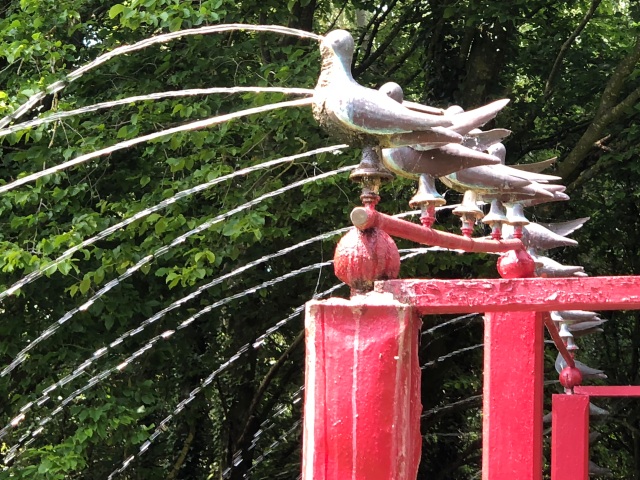
Elsewhere, using the difference in height between the two branches of the river enabled the construction of cascades. These were common in gardens of the period when the chateau’s construction but for the largest the owner decided to alter the usual classical iconography and instead pick up a Mayan legend.
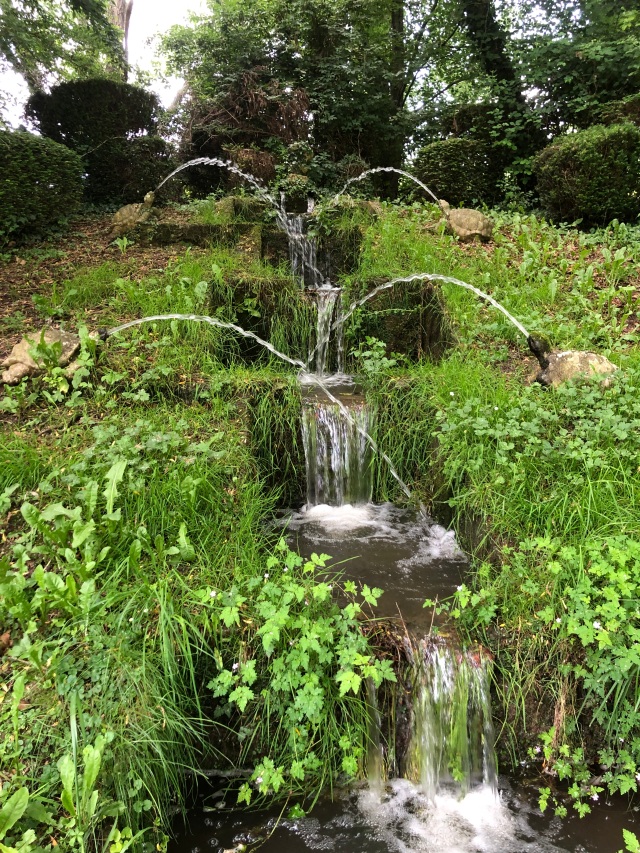
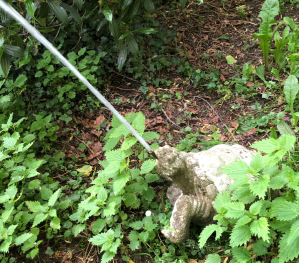 This tells of the rain god Chaac and some sacred tortoises. Chaac had been smitten by a beautiful goddess and completely forgotten his weather duties which led to a severe drought and then famine. Eventually the population called on their sacred tortoises to save them, lifting them on the roofs of their temple where they could simultaneously all shout CHAAC! up to heaven to remind him of his obligations. Feeling guilty he asked the the tortoises to spout water, thus saving the harvest.
This tells of the rain god Chaac and some sacred tortoises. Chaac had been smitten by a beautiful goddess and completely forgotten his weather duties which led to a severe drought and then famine. Eventually the population called on their sacred tortoises to save them, lifting them on the roofs of their temple where they could simultaneously all shout CHAAC! up to heaven to remind him of his obligations. Feeling guilty he asked the the tortoises to spout water, thus saving the harvest.


from Systema Horticulturae, 1677
The next watery joke took me back to the late 17thc and an illustration in John Worldige’s Systema-Horticulturae of 1677 which comes with the comment above. However at Vendeuvre the statue is supposed to illustrate another Greek myth which like many others is about a rather unpleasant god forcing himself onto a young woman. The statue is said to be of the nymph Cleance who fought off the advances of Neptune, the god of the sea. He was furious and turned her into stone. The others nymphs were horrified and appealed to the sea goddess Thetis to restore Cleance to life, but neither she nor fellow gods could overrule the power of Neptune. They could, however, find a compromise whereby Cléance could be alive and sentient although she had to remain a statue. Pretty dreadful compromise really and I couldn’t see the connection with the statue but…
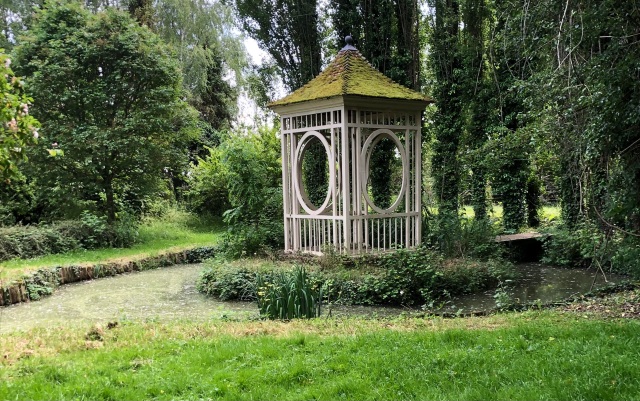
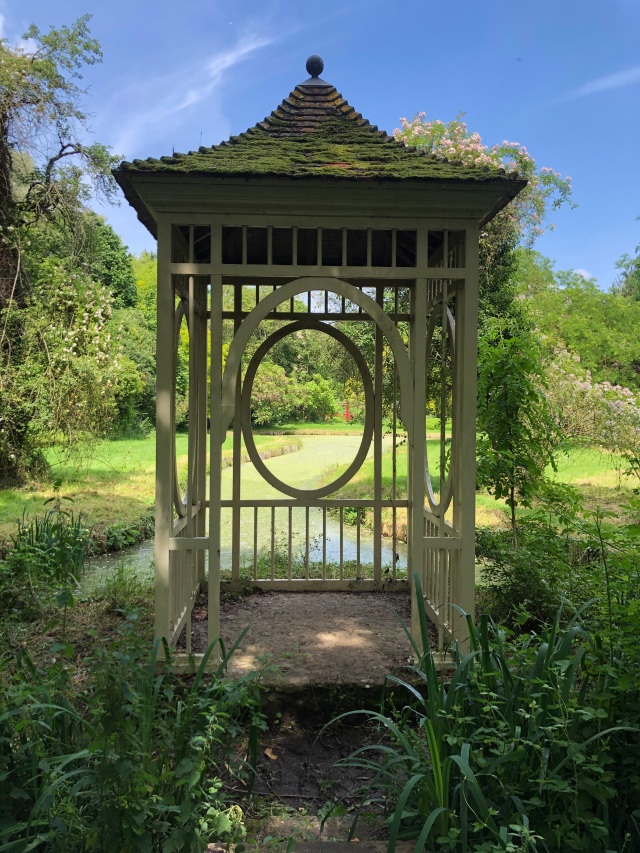 At the edge of the garden stands another small gazebo/temple overlooking a pool [sadly rather green and stagnant] and down across the more open section of the park, which is heavily planted with bulbs. From this point on the garden takes a different turn.
At the edge of the garden stands another small gazebo/temple overlooking a pool [sadly rather green and stagnant] and down across the more open section of the park, which is heavily planted with bulbs. From this point on the garden takes a different turn.
Paths lead through thickets of bamboo, areas of topiarised evergreens, and a small hedged in aviary and emerges in avenues of limes that flank the gardens at the rear of the chateau.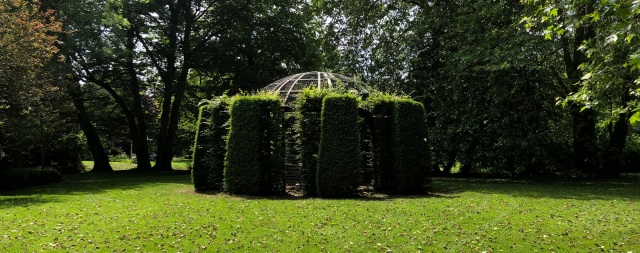
Here the style reverts to traditional formal parterres on a slope overlooking a large formal pond which is fed by one of the branches of the river.
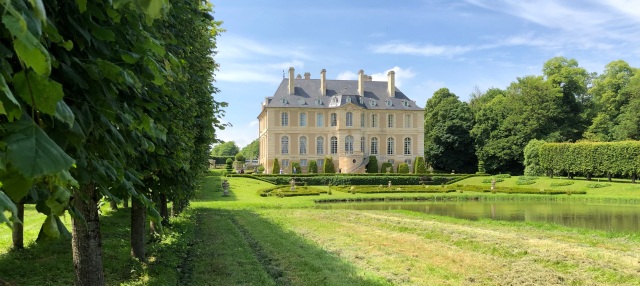

The eye-catcher screen can be senate the far end of the lake
The view from the chateau terrace is over the surrounding farmland but to provide an eye-catcher there is a central arched “screen” covered with creepers and with “windows” that contain wooden dummy board figures.
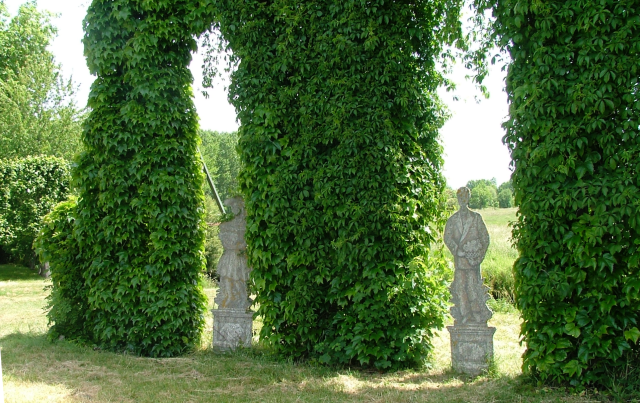
And behind the scenes you can see how basic the idea is and how it was done!
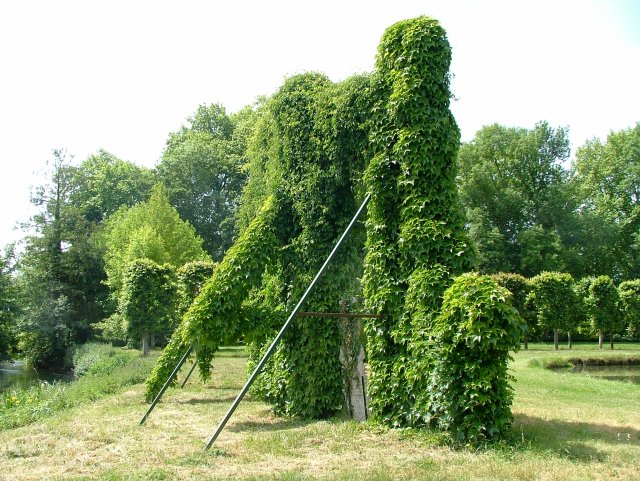
 On the other side of the formal gardens there had been a large orchard, but it had been so badly neglected that the Count decided not to replant but instead create a grotto and eight “Green Rooms”, laid out in pairs along a central path. These were inspired by a visit to Pillnitz near Dresden the summer residence of the Kings of Saxony.
On the other side of the formal gardens there had been a large orchard, but it had been so badly neglected that the Count decided not to replant but instead create a grotto and eight “Green Rooms”, laid out in pairs along a central path. These were inspired by a visit to Pillnitz near Dresden the summer residence of the Kings of Saxony.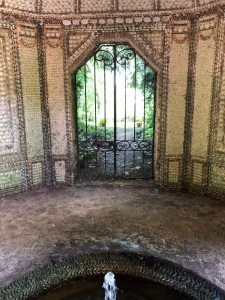
The Grotto is at ground level, underneath an artificial mound that is covered with creepers and shrubs, and topped with a Chinese style gazebo. It has a small central pool and is decorated with over 200,000 shells, with panels reminiscent of the work of Arcimboldo. 
Beyond the grotto is the central path with topiary and lots of white flowering plants – white being the nearest colour made by splashing water
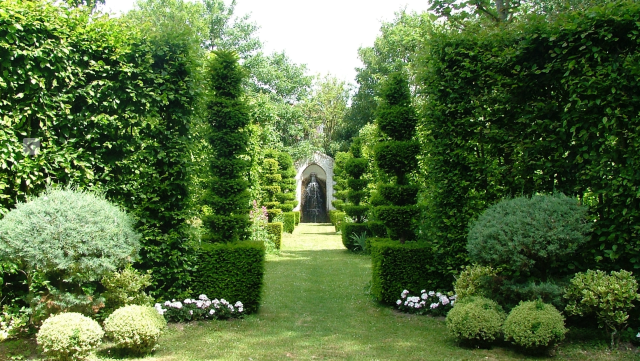
these conceal the eight small individual gardens, some more impressive than others!
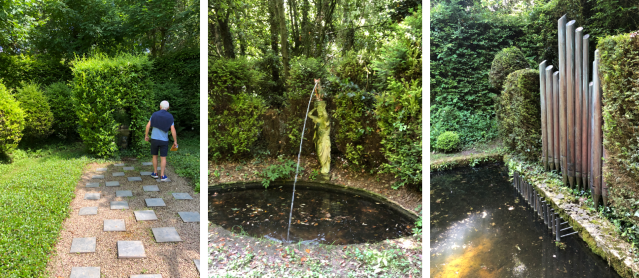
 There were sections for a game of hopscotch, where some of the squares are pressure pads and create water spouts when stepped on, a water organ, an instrument introduced into France by the medieval garden maker Robert d’Artois, the Egyptian cat god Bastet sitting on the head of a caryatid, [no – I didnt get it either!]
There were sections for a game of hopscotch, where some of the squares are pressure pads and create water spouts when stepped on, a water organ, an instrument introduced into France by the medieval garden maker Robert d’Artois, the Egyptian cat god Bastet sitting on the head of a caryatid, [no – I didnt get it either!]
There’s a Tartar Tent, based I’d guess on a similar one at the late 18thc gardens of Desert de Retz, and another at the Chateau of Menars and that was seen and then copied by Gustav III of Sweden at his palace of Haga.
 And there’s a small brick pavilion inspired by the ones at Hidcote. It faces a formal rectangualr pond surrounded by water spouting frogs.
And there’s a small brick pavilion inspired by the ones at Hidcote. It faces a formal rectangualr pond surrounded by water spouting frogs.
At the very far end of the garden are the surviving walls of an old hothouse probably used for growing wall fruit. These are reached through a maze of luxurious vegetation and create a very sheltered space which has been planted as “Le Jardin Exotique” with many kinds of palms, bananas, tetrapanax and other tropical looking foliage and fruit plants. It also has a small section of greenhouse where the current garden staff sow seeds and keep cuttings etc.
Eventually the paths through the woodland land back to the formal gardens behind the chateau.
 Vendeuvre is definitely worth a visit if you’re in Normandy [especially if you like pampered pets, dolls houses or risking getting wet] & if you want to know more you can check out their website [in English as well as French] and see a short video by the owner, Guy de Vendeuvre, on YouTube.
Vendeuvre is definitely worth a visit if you’re in Normandy [especially if you like pampered pets, dolls houses or risking getting wet] & if you want to know more you can check out their website [in English as well as French] and see a short video by the owner, Guy de Vendeuvre, on YouTube.

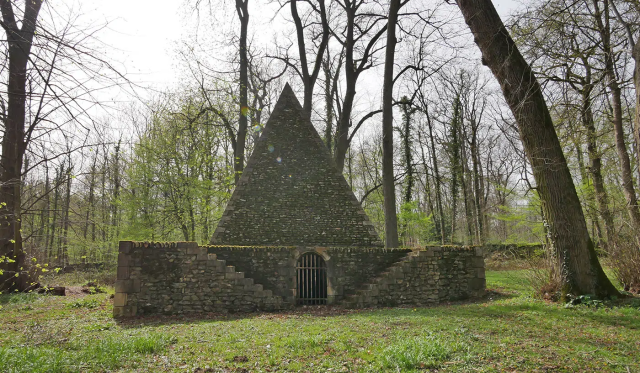
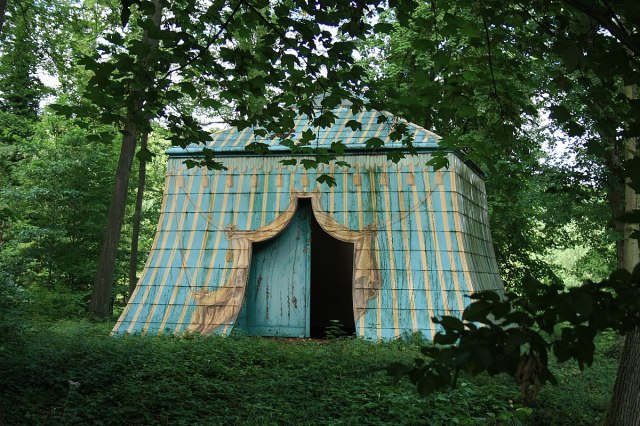
You must be logged in to post a comment.